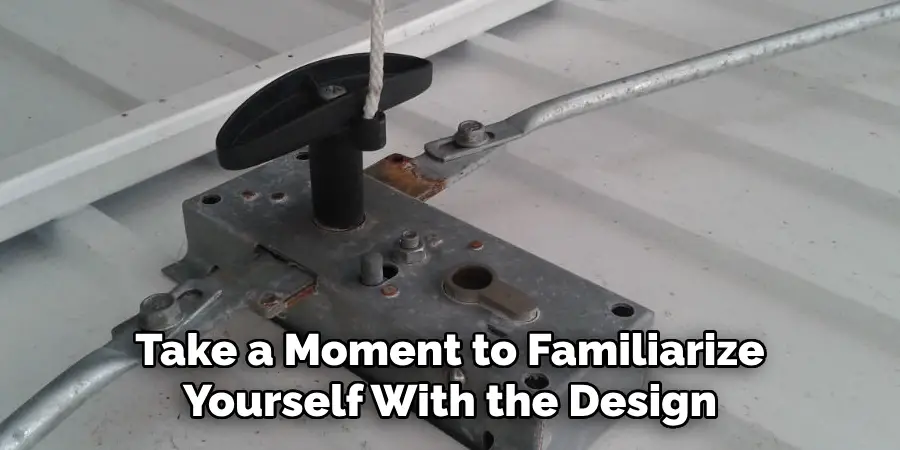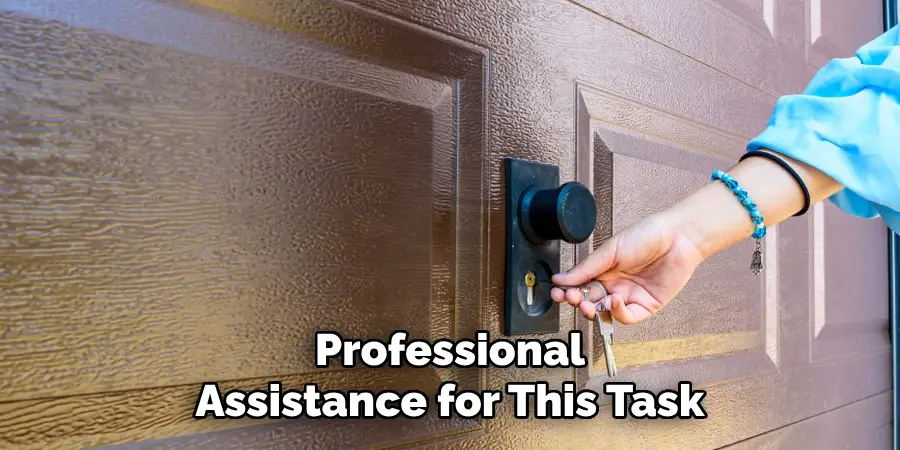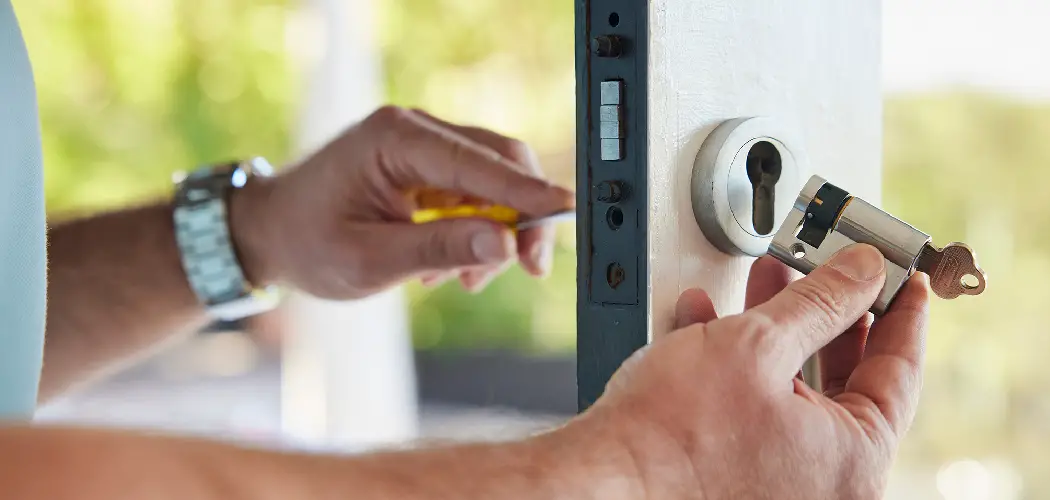Replacing a garage door handle lock may seem like a daunting task, but with the right tools and guidance, it can be a straightforward process. Whether your lock is damaged, outdated, or you’re simply upgrading for better security, knowing how to replace it yourself can save time and money.

This guide on how to replace garage door handle lock will walk you through the steps to ensure your garage door is secure and functional with a new handle lock.
Why Replace Your Garage Door Handle Lock?
Before getting into the steps of replacing your garage door handle lock, it’s important to understand why you may need to do so. Some reasons for replacing a garage door handle lock include:
Wear and Tear:
Over time, frequent use of the handle can cause the locking mechanism to wear out or break. This can make it difficult to open and close your garage door, or even render the lock useless.
Security Concerns:
If you have lost a key or suspect someone may have a copy of your key, it’s important to replace the handle lock to ensure the security of your home. It’s also a good idea to periodically replace your handle lock for added security.
Style Upgrade:
Replacing your garage door handle lock is also an opportunity to upgrade the style and appearance of your garage door. There are many different designs and finishes available that can enhance the overall look of your garage.
6 Steps on How to Replace Garage Door Handle Lock
Step 1: Remove Old Garage Door Handle Lock
Begin by locating the screws or fasteners that secure the old handle lock in place. Using the appropriate screwdriver or tool, carefully loosen and remove these screws. Once the screws are removed, gently pull the handle lock away from the garage door.
Depending on the model, there may be a connecting rod or additional hardware that needs to be detached. Be sure to keep all removed parts organized, as they may serve as reference when installing the new lock. If the lock is rusted or stuck, consider using a lubricant to ease its removal.
Step 2: Prepare New Garage Door Handle Lock
Before installing the new handle lock, inspect it to ensure all necessary parts are included. This typically consists of the handle, mounting screws, connecting rods, and any additional hardware specified in the instruction manual.
Take a moment to familiarize yourself with the design and functionality of the new lock. If required, adjust the lock mechanism or rods to match the dimensions of your garage door. It’s recommended to apply a small amount of lubricant to any moving parts of the lock to ensure smooth operation. Double-check that the new lock is compatible with your garage door model before proceeding with installation.

Step 3: Apply Lubricant (Optional)
While not mandatory, applying lubricant to the moving parts of the lock can greatly enhance its performance and longevity. Focus on areas such as the locking mechanism, hinges, and connecting rods.
Use a lubricant that is specifically designed for metal components, such as silicone or graphite-based products, to avoid damage or residue buildup. Apply a small amount evenly and wipe away any excess to prevent dripping or mess. This step will ensure the lock operates smoothly and minimizes wear over time.
Step 4: Install New Garage Door Handle Lock
Begin by aligning the new handle lock with the holes in the garage door. Ensure that the handle is positioned correctly, with the keyhole facing outward for easy access. Insert the mounting screws or bolts provided with the lock through the designated holes, and secure them tightly using a screwdriver or wrench.
Once the handle is firmly in place, connect the internal locking mechanism according to the manufacturer’s instructions, ensuring it engages properly with the locking rods. After installation, test the handle to confirm smooth operation and secure locking. Double-check all fasteners to guarantee the lock is firmly affixed to the garage door.
Step 5: Test New Garage Door Handle Lock
Once the installation is complete, thoroughly test the new garage door handle lock to ensure it functions correctly. Begin by locking and unlocking the handle multiple times, checking for smooth and secure operation.
Verify that the locking rods fully engage and retract without resistance. Next, close the garage door and ensure the handle securely locks the door in place. If any issues arise, refer to the manufacturer’s troubleshooting guide and make necessary adjustments. Testing ensures the lock provides the intended security and peace of mind.
Step 6: Adjust as Needed
If the garage door handle lock does not operate smoothly or securely during testing, adjustments may be required. Begin by inspecting the alignment of the locking rods and ensure they are properly positioned to engage with the door frame. If misaligned, carefully adjust the rods so they slide effortlessly into their designated slots. Additionally, check for any loose screws or components on the handle mechanism and tighten them as necessary. Lubricate moving parts with a silicone-based lubricant if they seem stiff or resistant. Repeat the testing process after making adjustments to verify proper functionality.
Following these steps on how to replace garage door handle lock will ensure that your garage is secure and functioning properly. However, it is important to note that if you are not comfortable or experienced with handling tools and hardware, it may be best to seek professional assistance for this task.

Do You Need to Use Professionals?
While replacing a garage door handle lock can often be a straightforward DIY project, there are situations where seeking professional help may be the safer and more effective option. If you encounter difficulty removing the old lock, notice damage to the garage door mechanism itself, or lack the necessary tools, a professional technician can ensure the job is completed correctly and safely.
Additionally, professionals have the expertise to handle more complex issues that might arise, such as alignment problems or compatibility concerns with new lock systems. If you have any doubts about your skills or the complexity of the task, it is always advisable to consult a professional to avoid potential injuries or inadvertent damage to your garage door.
Frequently Asked Questions
Q: How Do I Choose the Right Garage Door for My Home?
A: When selecting a garage door, consider factors such as material (steel, wood, aluminum, etc.), insulation, design and style options, and durability. It is also important to think about your budget and any specific requirements for your home’s layout or climate.
Q: What Are the Most Common Garage Door Problems?
A: Some of the most common garage door problems include broken springs, faulty sensors, damaged panels, and malfunctioning openers. Other issues may also arise due to wear and tear or lack of maintenance.
Q: How Often Should I Service My Garage Door?
A: It is recommended to have your garage door serviced at least once a year to ensure proper functioning and catch any potential problems early on. However, if you notice any unusual noises or difficulties with opening and closing, it is best to schedule a service appointment immediately.

Q: Can I DIY Garage Door Repairs?
A: While there are some simple maintenance tasks that can be done by homeowners (such as cleaning and lubricating the tracks), it is not recommended to attempt major repairs on your own. Garage doors are heavy and complex machines, and attempting DIY repairs without proper knowledge and equipment can be dangerous. It is best to leave repairs to trained professionals.
Q: What Should I Do if My Garage Door Stops Working?
A: If your garage door suddenly stops working, first check for any obvious issues such as a power outage or disconnected power source. If everything seems fine, it could be due to a malfunctioning component or part. In this case, it is best to call a professional garage door technician to diagnose and fix the issue.
Q: How Can I Keep My Garage Door in Good Condition?
A: Regular maintenance is key to keeping your garage door in good condition. This includes lubricating moving parts, checking for worn or damaged components, and keeping the tracks clean and aligned. It is also important to avoid slamming the door shut or using excessive force when opening or closing it.
Q: What Are Some Common Garage Door Problems?
A: Some common garage door problems include malfunctioning sensors, broken springs, misaligned tracks, and worn cables or rollers. These issues can often be prevented by regularly maintaining your garage door and addressing any potential issues as soon as they arise.

Conclusion
Securing your garage is an essential step in protecting your home and belongings. By properly installing and maintaining a garage door handle lock and incorporating additional security measures, you can significantly reduce the risks of unauthorized access.
A combination of vigilance and reliable security features ensures peace of mind and enhances the overall safety of your property. Thanks for reading this article on how to replace garage door handle lock.
I am Rick. I grew up helping my dad with his handyman service. I learned a lot from him about how to fix things, and also about how to work hard and take care of business. These days, I’m still into fixing things- only now, I’m doing it for a living.
I’m always looking for new ways to help people grow and develop. That’s why I have created this blog to share all my experience and knowledge so
that I can help people who are interested in DIY repair.

